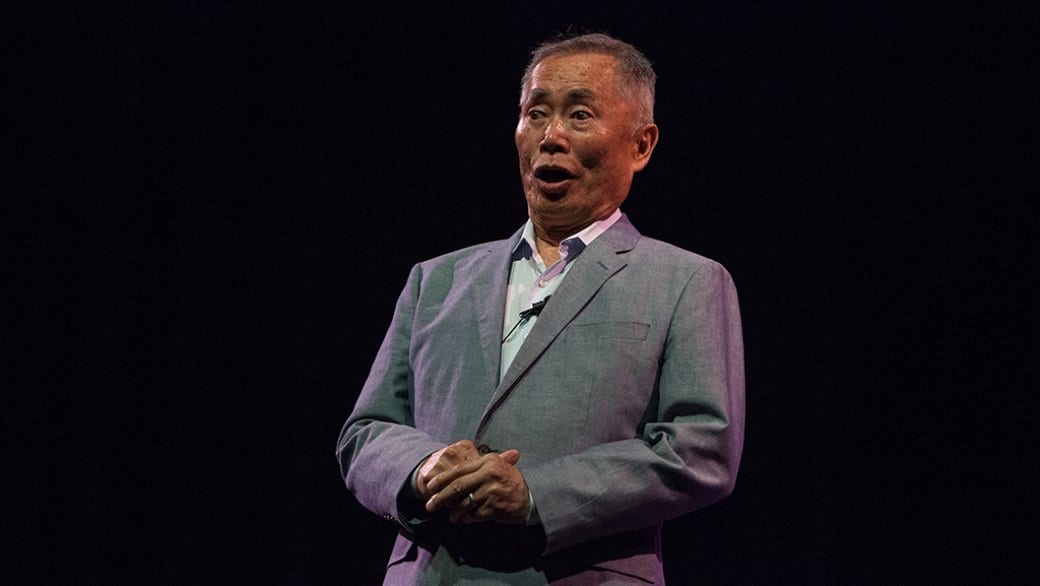With a standing ovation and his famously charming, “Oh my!”, actor and LGBT rights activist George Takei took to the stage of the Ryerson Theatre on June 26, 2016, as part of Pride Toronto’s queer icon series.
While Takei is revered for his role as Ensign Sulu from the original Star Trek series, his fame has grown tenfold since he came out and became an activist, largely using the power of social media to share his messages of love and acceptance.
Takei began his talk by praising Canada for embracing same-sex marriage in 2005, helping to pave the way for the US’ decision on equal marriage in 2015.
Part history lesson and part personal experience, Takei shared his story of being sent to an American Japanese internment camp during the Second World War. Only days after his fifth birthday, he and his family were forced from their home, labeled “enemy non-aliens” by the state, a term that Takei still says makes no sense to him, and shipped across the country to endure the humiliation and injustice of being considered an enemy of the state because of their cultural heritage.
As a teenager, Takei became involved in political and other forms of activism after being inspired by his father’s outlook on democracy. Though he participated in local politics, activism and the civil rights movement, Takei acknowledged that he was silent for a very long time about the most important issue to him, his sexual identity.
The turning point for Takei came when then governor of California Arnold Schwarzenegger vetoed a same-sex marriage bill in the early 2000s. Unable to hold his silence any longer, and with the constant support of his husband, Brad, Takei took the opportunity to come out and publicly condemn Schwarzenegger. And with that, the next stage of Takei’s activism was born.
Though Takei is surely aware of the impact his presence has had in the LGBT community, he is quick to praise other activists for leading the charge and breaking down barriers long before he broke his silence.
He also mentioned several times the fear of losing his acting career is what kept him silent for so long. As fate would have it, however, coming out has given him a new voice and influence, making him more popular and loved than ever.

 Why you can trust Xtra
Why you can trust Xtra


